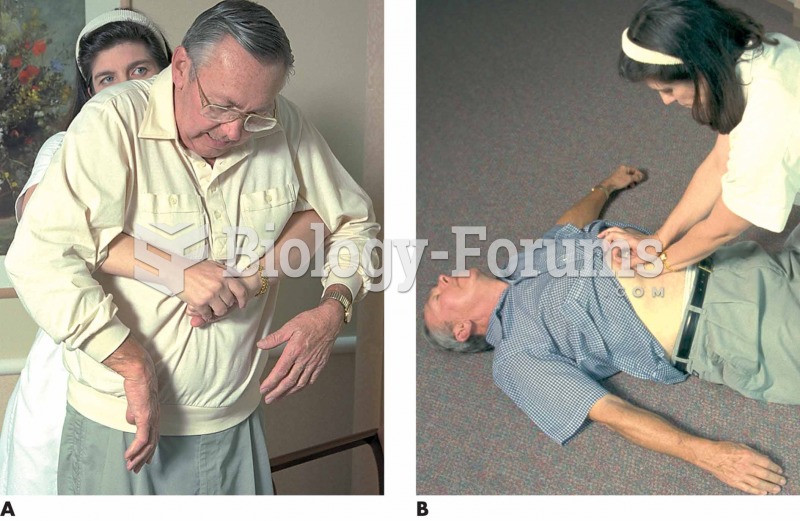|
|
|
Bacteria have flourished on the earth for over three billion years. They were the first life forms on the planet.
Elderly adults are living longer, and causes of death are shifting. At the same time, autopsy rates are at or near their lowest in history.
The familiar sounds of your heart are made by the heart's valves as they open and close.
The senior population grows every year. Seniors older than 65 years of age now comprise more than 13% of the total population. However, women outlive men. In the 85-and-over age group, there are only 45 men to every 100 women.
Bisphosphonates were first developed in the nineteenth century. They were first investigated for use in disorders of bone metabolism in the 1960s. They are now used clinically for the treatment of osteoporosis, Paget's disease, bone metastasis, multiple myeloma, and other conditions that feature bone fragility.
 Administration of abdominal thrusts (the Heimlich maneuver) to (A) a conscious victim and (B) an unc
Administration of abdominal thrusts (the Heimlich maneuver) to (A) a conscious victim and (B) an unc
 Fractures are diagnosed based on an X-ray of the broken bone. Shown here: a comminuted fracture of ...
Fractures are diagnosed based on an X-ray of the broken bone. Shown here: a comminuted fracture of ...





